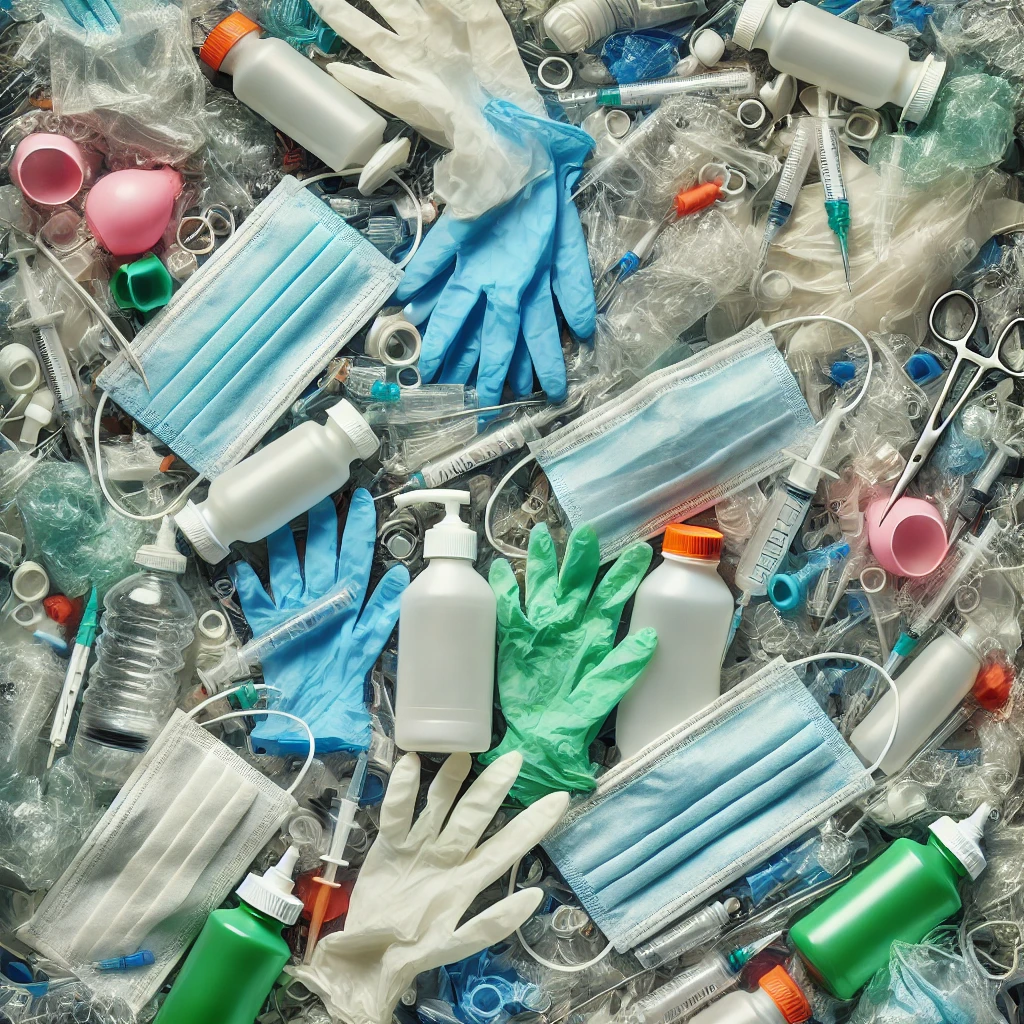How to Transform Healthcare Plastics Circularity

A paradigm shift is underway as the plastics industry moves towards sustainability. However, healthcare plastics present challenges that must be overcome to incorporate PCR in their applications and enhance circularity.
From syringes and IV bags to prosthetics and sterile packaging, plastics offer versatility, sterility, and cost-effectiveness, making them essential in various medical applications. However, the environmental impact of plastic waste in healthcare is significant. U.S. healthcare facilities generate around 14,000 tons of waste daily, with 20-25% attributed to plastic products and packaging.
You can also read: Antibacterial Polymers: Advancing in Public Health
The report Circularity for Healthcare Plastics from the Healthcare Plastics Recycling Council explains this niche’s leading drivers, challenges, and opportunities.
Drivers for Circularity in Medical Plastics
- Customers: Customers are leading the charge. Their demand for more sustainable solutions has led to trends in the EU focused on the recyclability and elimination of specific materials like PVC, avoiding multilayer materials, and incorporating criteria identified in the Plastics Recyclers Europe Design Guideline. ,
- Legislation: Legislation also plays a crucial role. While North America lacks mandates for recycled content in medical devices, broader industry pledges and EU directives support circular economy goals. For instance, the EU’s Packaging and Packaging Waste Directive encourages the development of standards for recycled material content in packaging, fostering a market for recycled plastics. Another critical driver of legislation has been China’s ban on importing plastic waste. Developed countries, like the United States, had been exporting much of their recyclable waste to China due to inadequate domestic recycling infrastructure. As a result, manufacturers and recycling companies are now investing in recycling facilities and technologies.
- Manufacturers: Many medical device manufacturers aim to reduce their products’ carbon footprints and strive to build resilience in their material supply chains. Recycling helps manufacturers achieve these environmental goals. Additionally, it allows them to meet the rising demand from healthcare facilities, which increasingly seek ways to reduce plastic waste. Consequently, recycling also helps protect the environment.
Current Challenges
The incorporation of recycled material in healthcare plastics is held back by some challenges that need to be addressed.
- Performance: Recycled materials must meet stringent quality and performance criteria, including strength, flexibility, permeability, and sterilization compatibility. Variations in recycled content slots can lead to inconsistencies, potentially compromising device performance, sterility and even biocompatibility.
- Traceability: Regulatory standards such as ISO 13485:2016 and U.S. 21 CFR 820.65 require maintaining a Device History Record (DHR) that traces material content from the final product to individual sources. Ensuring traceability for recycled materials is complex, impacting biocompatibility and material selection. This complexity makes manufacturers hesitant to shift from virgin materials to recycled content. Moreover, the international standard ISO 11607-1:2019, 5.1.5 states specifically, regarding to sterile barrier packaging materials that: “it is unlikely that anything other than virgin manufacturing waste will be used in recycled materials, due to insufficient controls to allow the safe use of other recycled material in sterile barrier systems.”
- Market limitations and regulatory constraints: The medical device industry’s small size and high regulation levels result in limited investment in R&D for incorporating recycled content. Manufacturers are risk-averse, often reluctant to adopt new approaches without a strong consensus between industry, standards organizations, and regulators.
Non-sterile Healthcare Applications as Potential Opportunities
Despite these challenges, significant opportunities exist for integrating recycled content into healthcare plastics. Non-sterile healthcare applications, such as secondary and tertiary packaging and non-sterile products, present promising avenues. For example, sharps disposal bins, which must meet certain storage and transportation requirements but do not need to be sterile, pose fewer technical challenges for incorporating recycled resins.
Additionally, improving the recycling infrastructure is another critical opportunity. China’s ban on plastic scrap imports has spurred investments in domestic recycling infrastructure. Initiatives like the RECOVER Act, which allocates federal funds to improve recycling infrastructure, aim to overcome barriers related to the availability, quality, and cost of recycled resins. These improvements are essential for revitalizing domestic collection and processing capabilities.
Moreover, new recycling technologies are also emerging. Advanced methods, such as chemical recycling, can handle degraded, complex, or contaminated plastics, producing high-quality recycled resins. These technologies can recycle all plastic waste without compromising material properties, enabling new opportunities in medical devices and healthcare applications.
You can read the complete report from the Healthcare Plastics Recycling Council HERE.
